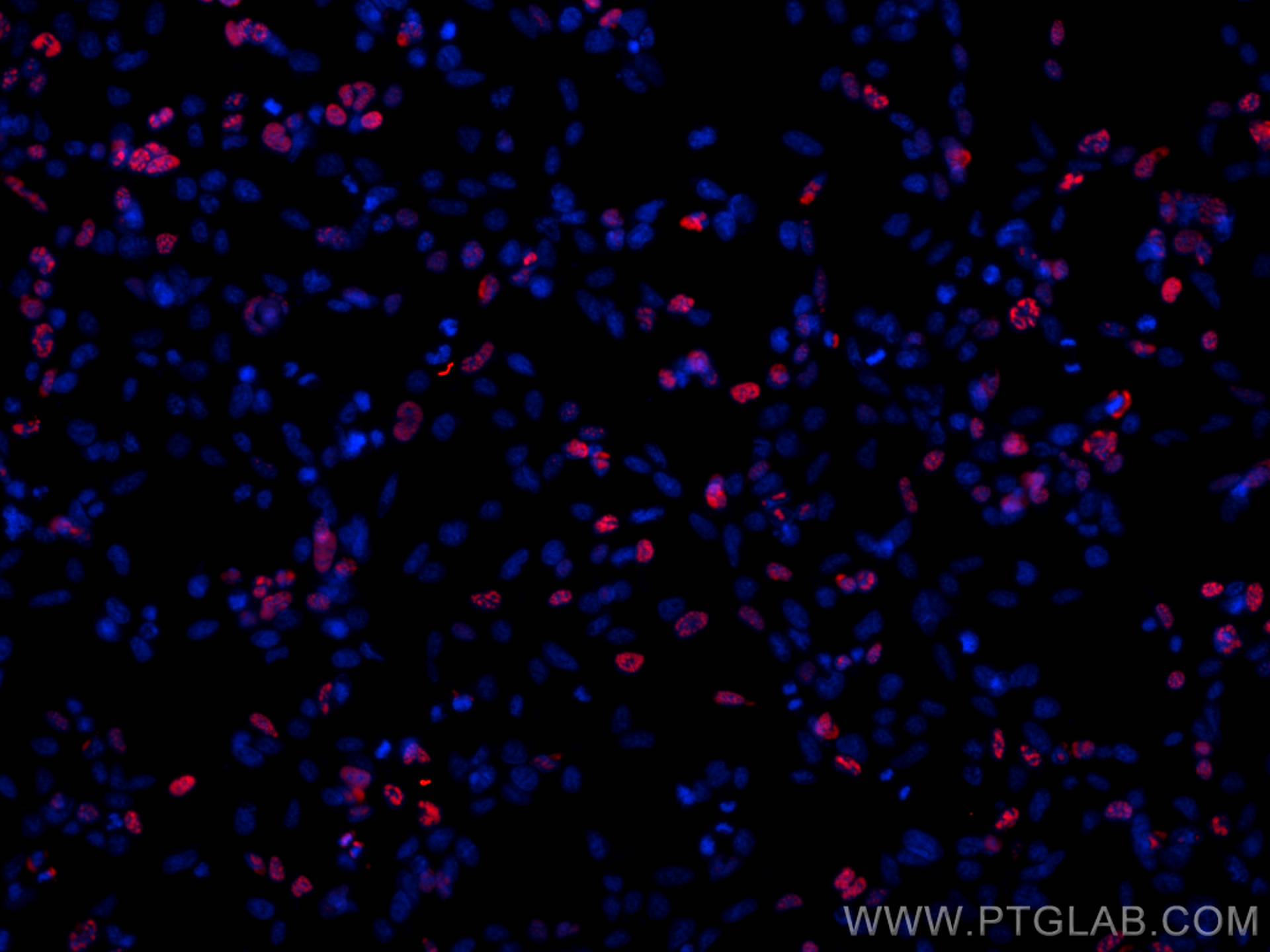验证数据展示
经过测试的应用
| Positive IF/ICC detected in | Transfected HEK-293 cells |
推荐稀释比
| 应用 | 推荐稀释比 |
|---|---|
| Immunofluorescence (IF)/ICC | IF/ICC : 1:200-1:800 |
| It is recommended that this reagent should be titrated in each testing system to obtain optimal results. | |
| Sample-dependent, Check data in validation data gallery. | |
产品信息
CL594-81290 targets HA Tag in IF/ICC applications and shows reactivity with recombinant protein samples.
| 经测试应用 | IF/ICC Application Description |
| 经测试反应性 | recombinant protein |
| 免疫原 | Peptide 种属同源性预测 |
| 宿主/亚型 | Rabbit / IgG |
| 抗体类别 | Recombinant |
| 产品类型 | Antibody |
| 全称 | HA Tag |
| 别名 | HA |
| 基因名称 | HA Tag |
| Gene ID (NCBI) | 6 |
| RRID | AB_3086563 |
| 偶联类型 | CoraLite®594 Fluorescent Dye |
| 最大激发/发射波长 | 588 nm / 604 nm |
| 形式 | Liquid |
| 纯化方式 | Protein A purification |
| 储存缓冲液 | PBS with 50% glycerol, 0.05% Proclin300, 0.5% BSA, pH 7.3. |
| 储存条件 | Store at -20°C. Avoid exposure to light. Stable for one year after shipment. Aliquoting is unnecessary for -20oC storage. |
背景介绍
Protein tags are a protein or peptide sequences located either on the C- or N- terminal of the target protein, which can facilitate solubility, detection, purification, localization, and expression of the target protein. The HA tag corresponds to amino acid residues YPYDVPDYA of a surface glycoprotein -human influenza virus hemagglutinin (HA). The HA tag is commonly used for a variety of research applications including chromatin immunoprecipitation, ELISA, flow cytometry, western blotting, immunocytochemistry/immunofluorescence among of others.
实验方案
| Product Specific Protocols | |
|---|---|
| IF protocol for CL594 HA Tag antibody CL594-81290 | Download protocol |
| Standard Protocols | |
|---|---|
| Click here to view our Standard Protocols |
